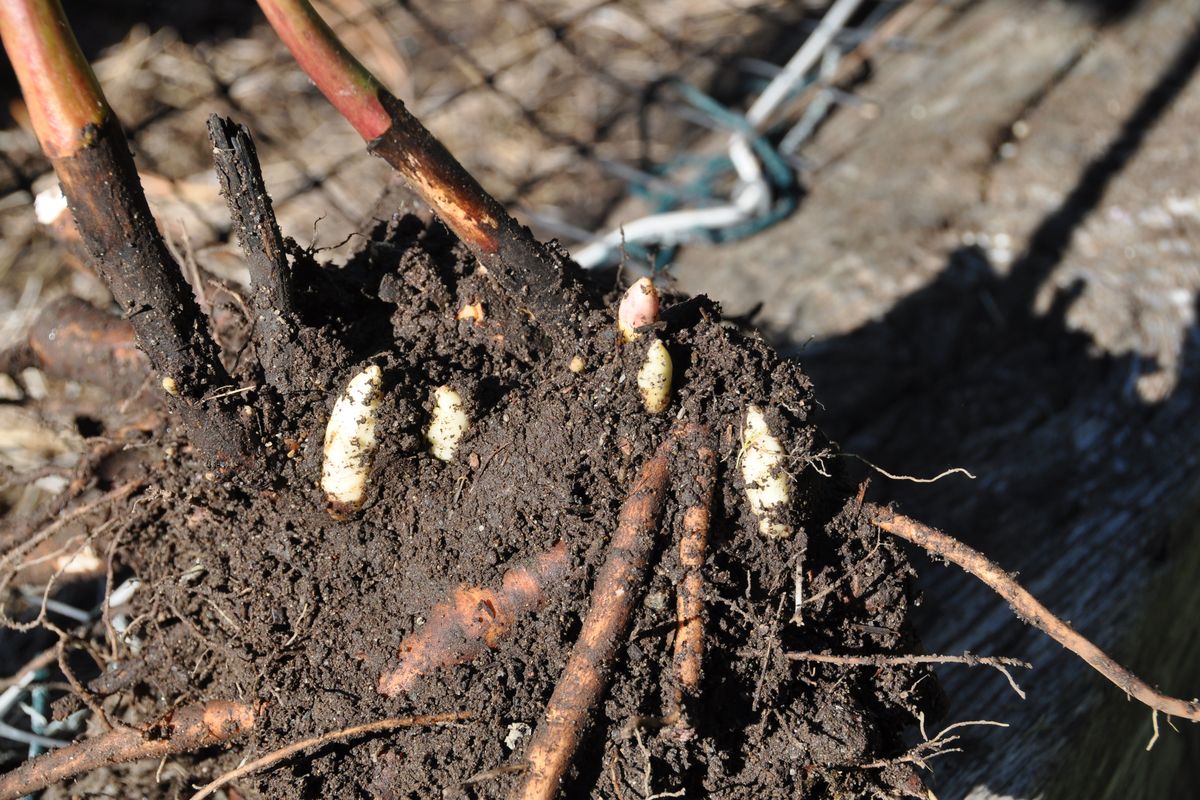Gardening: Take care when transplanting peonies for spring bloom

Herbaceous peonies are one of the toughest garden plants we have in the Inland Northwest. They are deer resistant and hardy to winter cold. They don’t need any special care in the garden save for staking to hold up the flowers and a little fertilizer in the spring. They can live for decades in the same sunny spot.
What they have in garden longevity and resiliency, however, they lack when it comes time to transplanting them. Transplanting peonies so they rebloom takes some attention to details.
After first frost
The most successful time to move peonies is in the fall after the first frost and the foliage begins to yellow. The plant will relocate nutrients stored in its leaves to the roots for the winter so that it can have them available in the spring and get off to a good start. Plants can be dug in the spring, but the chances of a successful move are often not good.
Eyes say it all
To start, trim down the dying foliage to the ground. Next, measure about 18 inches out from the center of the plant and insert your shovel straight down into the soil. Work your way around the plant, gently working the root ball loose. You want to harvest as much of the root ball as is possible. Once the root ball is out of the ground, look for the pinkish-to-white pointed “eyes” at the base of the plant. These are next year’s flowering stems.
Select a sunny site with well-drained soil. Peonies don’t do well in especially sandy or clayey soil. If you are stuck with these conditions, create a better planting base by mixing the soil 50/50 with compost. Dig the new hole large enough to accommodate the root ball comfortably. Set it in the hole so that the “eyes” are no more than 2 inches below the soil surface. If they get buried any deeper than that, the plant won’t bloom in future years. Gently pack the dirt back around the root and hand tamp it down. Peonies roots are fragile. Water the plant well and mulch with 2 inches of shredded pine needles or leaves.
If you want to divide a large peony into smaller plants, locate groups of three to five “eyes” on the root ball and then cut the root ball into pieces that have the “eyes” clusters and a generous chunk of root.
Bloom in shade
I found out this fall that there are peonies that like dappled woodland shade. Called woodland peonies, they grow about 2 feet tall with single white blooms in late May. Over time, they reseed and spread. I am rebuilding a shady garden in our backyard and this will make a perfect ground cover. The plants from the online nursery were expensive, but they also offered seeds at a much better price. I couldn’t resist. I planted some in my nursery bed and more around a patio by the back fence. I’ll let you know what comes up in the spring.